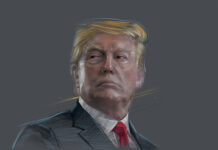
In a startling revelation that has sent shockwaves through historical circles, a retired judge from California has presented a theory that aviator Charles Lindbergh may have been involved in the death of his own son, Charles Lindbergh Jr., in 1932. The theory posits that the infamous kidnapping was actually a cover-up for medical experiments gone awry.
The retired judge, Lise Pearlman, has spent over a decade conducting forensic investigations into the case. Her findings suggest that Lindbergh, who was never considered a suspect due to his overwhelming fame, may have collaborated with Nobel Prize-winning biologist Alexis Carrel to perform experimental surgery on his child, ultimately leading to the child’s death.
On this date January 2 in 1935, Charles Lindbergh (center) returns to courtroom for trial of Richard Hauptmann for the kidnapping and murder of Charles Lindbergh, Jr. Photo: AP. #OTD pic.twitter.com/Q6iQtHyYmH
— Dr. Jeffrey Guterman (@JeffreyGuterman) January 2, 2024
Pearlman’s book, “Suspect No. 1: The Man Who Got Away,” draws upon medical reports, New Jersey State Police files, and writings by both Lindbergh and Carrel. She theorizes that Lindbergh viewed his son, who had an abnormally large head, as disposable in the pursuit of scientific advancement, particularly in the field of organ transplantation.
The implications of this theory are profound, casting a shadow over the ‘trial of the century’ which saw German immigrant Bruno Richard Hauptmann convicted and executed for the kidnapping and murder of the Lindbergh baby. Hauptmann maintained his innocence until his death, and now, advocates including the Innocence Project are calling for the case to be reopened.
Wow! I just posted yesterday that Charles Lindbergh was a Freemason and Nazi sympathizer who most likely sacrificed his child to Moloch for fame and power. https://t.co/NYt1nw83qK pic.twitter.com/wR6wxfxSH0
— The Sacred Blue Tent (@SabrinaGal182) January 3, 2024
Supporters of Pearlman’s theory argue that numerous leads were not followed during the original investigation, and that evidence was withheld from Hauptmann’s defense team. They believe that modern DNA testing could shed light on the true events of that fateful night and potentially exonerate Hauptmann posthumously.
The theory has garnered support from various quarters, including historians and relatives of Hauptmann. Some even envision staging a mock trial to reexamine the evidence and correct what they see as historical injustices. The idea is to use contemporary forensic techniques to test key items such as the ransom note left for the Lindberghs.
Despite the controversial nature of Pearlman’s claims, the push for reopening the case continues. Advocates argue that the truth deserves to be uncovered, not only for the sake of justice but also to ensure that history accurately reflects the events surrounding one of America’s most notorious crimes.
As the debate rages on, it remains to be seen whether new light will be shed on the Lindbergh kidnapping case. What is clear, however, is that the retired judge’s theory has introduced new questions about a case many thought was closed, prompting a reevaluation of a pivotal moment in American criminal history.











